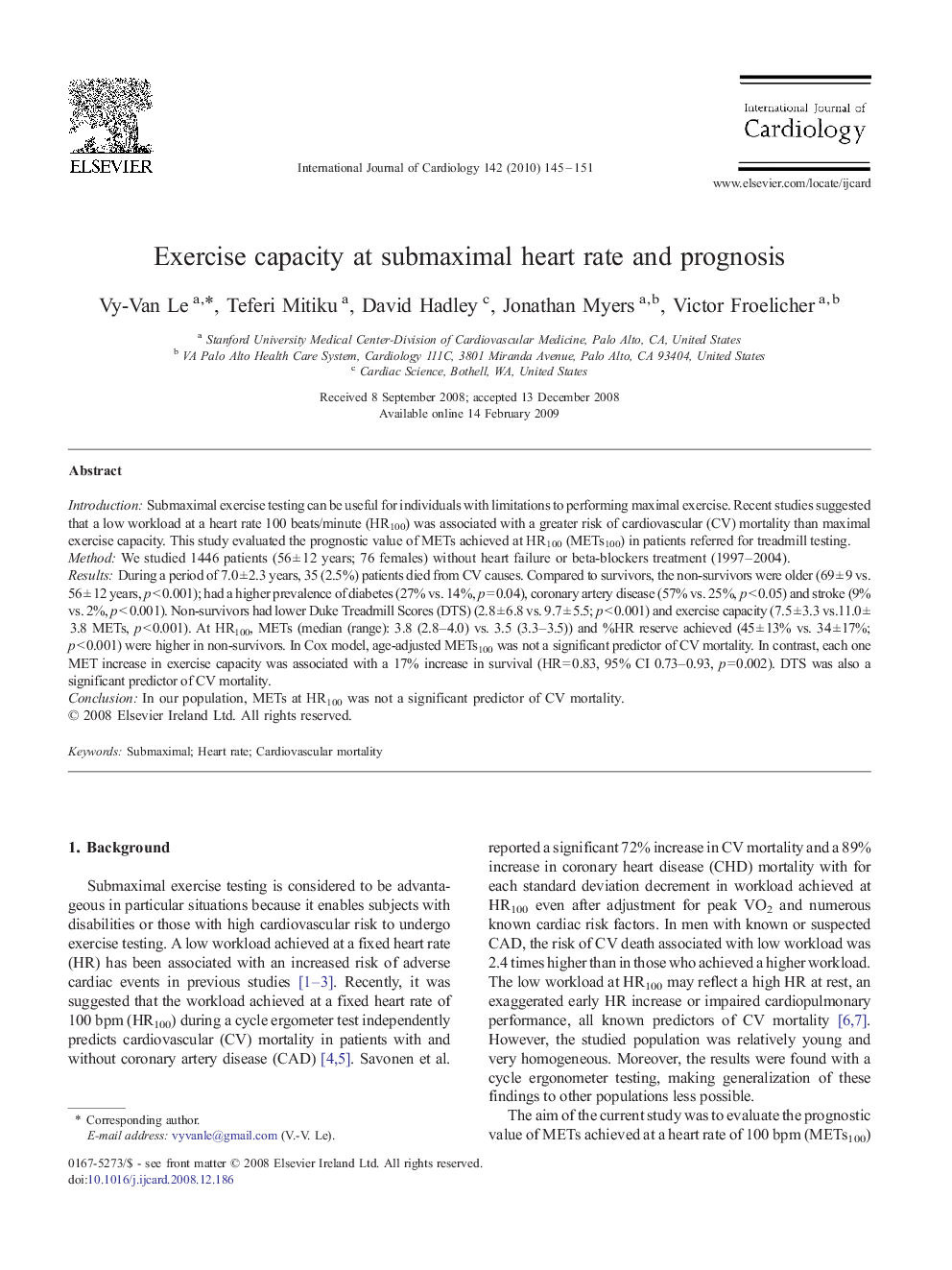| کد مقاله | کد نشریه | سال انتشار | مقاله انگلیسی | نسخه تمام متن |
|---|---|---|---|---|
| 2932502 | 1576298 | 2010 | 7 صفحه PDF | دانلود رایگان |

IntroductionSubmaximal exercise testing can be useful for individuals with limitations to performing maximal exercise. Recent studies suggested that a low workload at a heart rate 100 beats/minute (HR100) was associated with a greater risk of cardiovascular (CV) mortality than maximal exercise capacity. This study evaluated the prognostic value of METs achieved at HR100 (METs100) in patients referred for treadmill testing.MethodWe studied 1446 patients (56 ± 12 years; 76 females) without heart failure or beta-blockers treatment (1997–2004).ResultsDuring a period of 7.0 ± 2.3 years, 35 (2.5%) patients died from CV causes. Compared to survivors, the non-survivors were older (69 ± 9 vs. 56 ± 12 years, p < 0.001); had a higher prevalence of diabetes (27% vs. 14%, p = 0.04), coronary artery disease (57% vs. 25%, p < 0.05) and stroke (9% vs. 2%, p < 0.001). Non-survivors had lower Duke Treadmill Scores (DTS) (2.8 ± 6.8 vs. 9.7 ± 5.5; p < 0.001) and exercise capacity (7.5 ± 3.3 vs.11.0 ± 3.8 METs, p < 0.001). At HR100, METs (median (range): 3.8 (2.8–4.0) vs. 3.5 (3.3–3.5)) and %HR reserve achieved (45 ± 13% vs. 34 ± 17%; p < 0.001) were higher in non-survivors. In Cox model, age-adjusted METs100 was not a significant predictor of CV mortality. In contrast, each one MET increase in exercise capacity was associated with a 17% increase in survival (HR = 0.83, 95% CI 0.73–0.93, p = 0.002). DTS was also a significant predictor of CV mortality.ConclusionIn our population, METs at HR100 was not a significant predictor of CV mortality.
Journal: International Journal of Cardiology - Volume 142, Issue 2, 9 July 2010, Pages 145–151